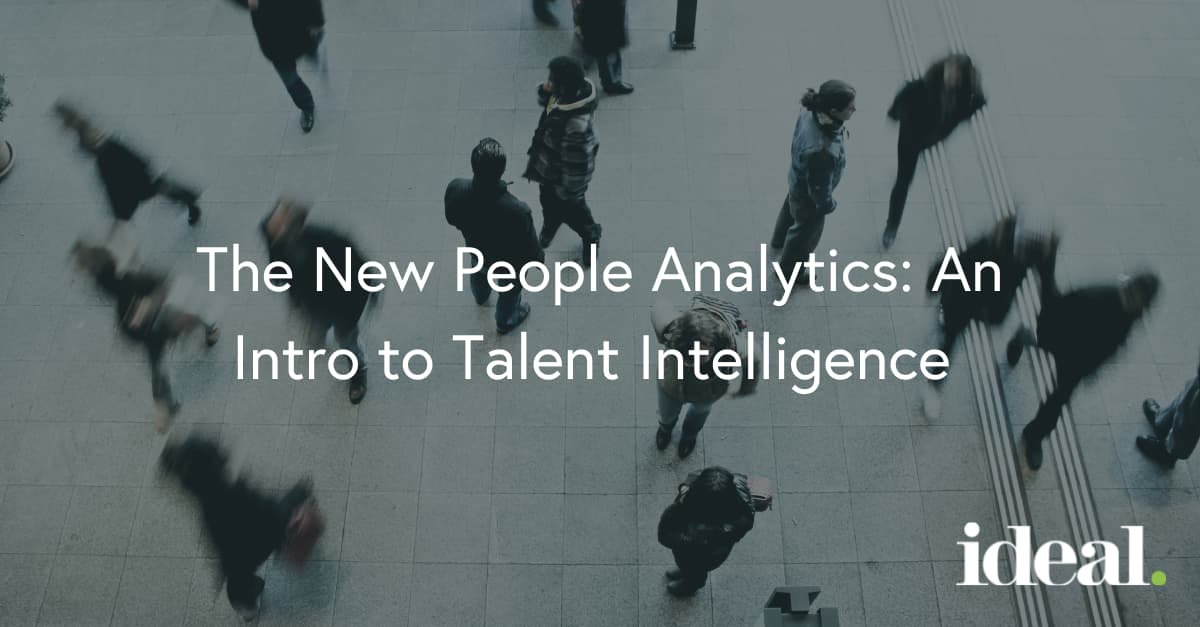People analytics has been one of the fastest developing recruitment trends in the past few years and in the wake of the pandemic, organizations are significantly changing their approach with talent intelligence. Leveraging data for company performance is a key part of the future of work, especially as global economies rebound and reopen.
Popularized by the Google people analytics team, people analytics has become refined as talent intelligence to better define how organizations execute their workforce strategy with data-driven decisions.
The adoption of people analytics for recruitment allows the recruitment function to play a more calculated role within a company’s overall strategy. An organization’s talent is one of their most valuable assets and needs to be managed as such.
Let’s break down how organizations are using analytics for recruitment and take that data a step further, including the insights you can generate and best ways to leverage the data already in your ATS.
What’s the difference between people analytics and talent intelligence?
People analytics is defined as the use of data and data analysis techniques to understand, improve, and optimize the people side of business.
The new and improved mindset around this data use is talent intelligence, which prioritizes a data-backed approach for engaging with your workforce across the entire employee lifecycle. This is a more purpose-driven approach for aligning your workforce strategy with your organizational objectives, as opposed to just general optimization.
People analytics have become ubiquitous in HR due to two main reasons:
- Innovations in data analytics technology and software in general
- Pressure for all departments (including HR) to move away from reactive instinct-based decision making to proactive data-based decision making
According to Deloitte, 75% of companies believe that using people analytics is “important,” but only 8% believe their organization is “strong” in this area.
This gap between what companies want and what companies are doing when it comes to their talent management represents a huge opportunity for HR leaders to take advantage of and become industry leaders.
What insights can talent intelligence provide?
- Candidate sources: Systematically measure where your best talent came from to allow you to more strategically allocate recruitment marketing spend.
- Quality of hire: Analyze which candidate characteristics (personality, skills, knowledge) make for a great hire for a specific role at your company.
- Shortlisting candidates: Use software to assess candidate characteristics objectively to identify the strongest candidates to move forward into the interview stage.
- Cost-per-hire & time-to-hire: Prove your ROI by calculating the money and time saved by adding automated people analytics to recruitment instead of manual hiring processes.
- Workforce planning forecasts: Proactively identify and predict the best times to ramp up or cut back on recruitment by assessing turnover and market conditions.
- Workplace diversity: Measure and increase workplace diversity through analyzing your demographic groups and assessing where blockages in your process exist.
- Retention: Track who is leaving your company and what organizations they move to next. Illuminate the areas your organization is vulnerable to losing your talent.
- Employer branding: Measure what attracts and resonates with today’s job seekers.
- Employee satisfaction: The employee experience is very important. Analyze which individuals and departments are underperforming and create interventions in real time.
- Compensation: Analyze competitive industry rates to attract, motivate, and retain employees, from both a salary and benefits perspective.
- Succession planning: Identify high potential individuals and providing development opportunities to build your talent pipelines from within.
- HR budgeting decisions: Efficiently allocate spending on the highest ROI activities and software.
5 tips on implementing talent intelligence
- Find a technology champion. Implementing talent-based technology requires organizational support. Find someone with the right authority to champion the cause and green light the resources required to implement people analytics into your recruitment process.
- Start with one problem you want to collect data for. Is there a quick and easy win, such as getting a handle on your turnover? Starting with a small test reduces your risk and creates fast proof-of-concept and potential ROI.
- Build (or buy) people analytics expertise. People analytics requires someone with existing familiarity with statistics or someone who’s eager, willing, and able to learn how to use people analytics software. People analytics expert Mark Berry recommends partnering with the right vendor:
Rightly positioned and properly executed, partnerships with vendors will pay a multiplier several times greater than the return on investment in your own technology.
- Leverage internal resources when possible. For example, a colleague in IT can help you with data collection and cleansing or an analyst from another department can assist with data analysis. An AI-based solution can help teams can generate insights on their own.
- Create an actionable plan based on the results. What insights do the results of the people analytics test you created tell you? Based on these results, come up with a plan that addresses the problem you were trying to solve in the first place. With the right technology solution, HR teams can create effective initiatives with the confidence of their data.
Key takeaways
Talent intelligence has already started digitally transform many HR functions, including talent acquisition and workforce management.
Sarah Brennan, founder of HR Tech Blog, points out that “For too long, HR has gotten a pass on lacking analytics because it was a ‘people person’ job or the technology to do it wasn’t affordable or effective.’
Recruitment departments will quickly learn and adopt people analytics as a tool to more efficiently source candidates, reduce time to hire, and accurately identify the most qualified candidates.
The end results of using analytics from talent intelligence? HR gains a long-awaited seat at the table as a part of organizational strategy, with valuable downstream benefits for quality of hire, employee retention, and reduced bias in all talent decisions.
